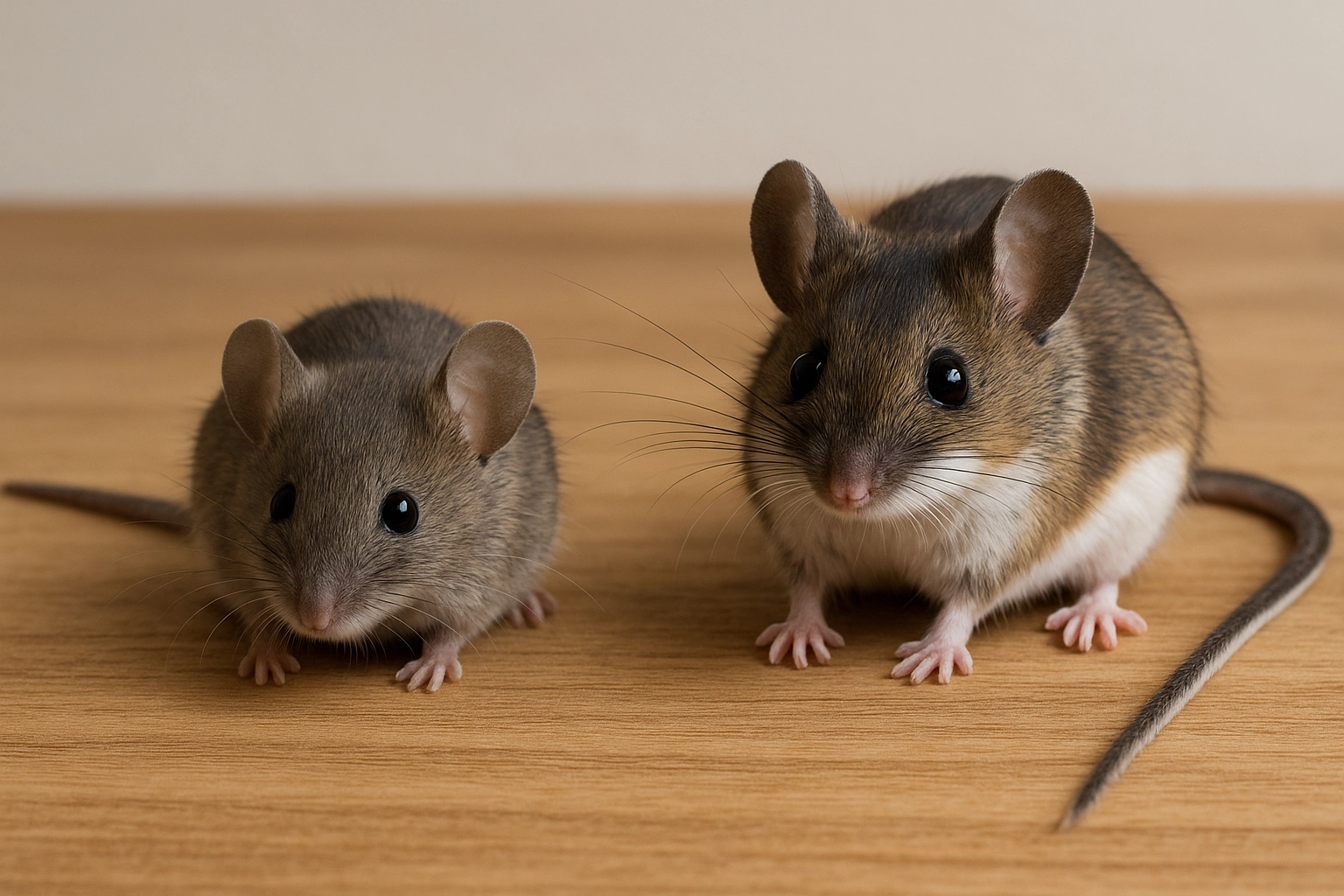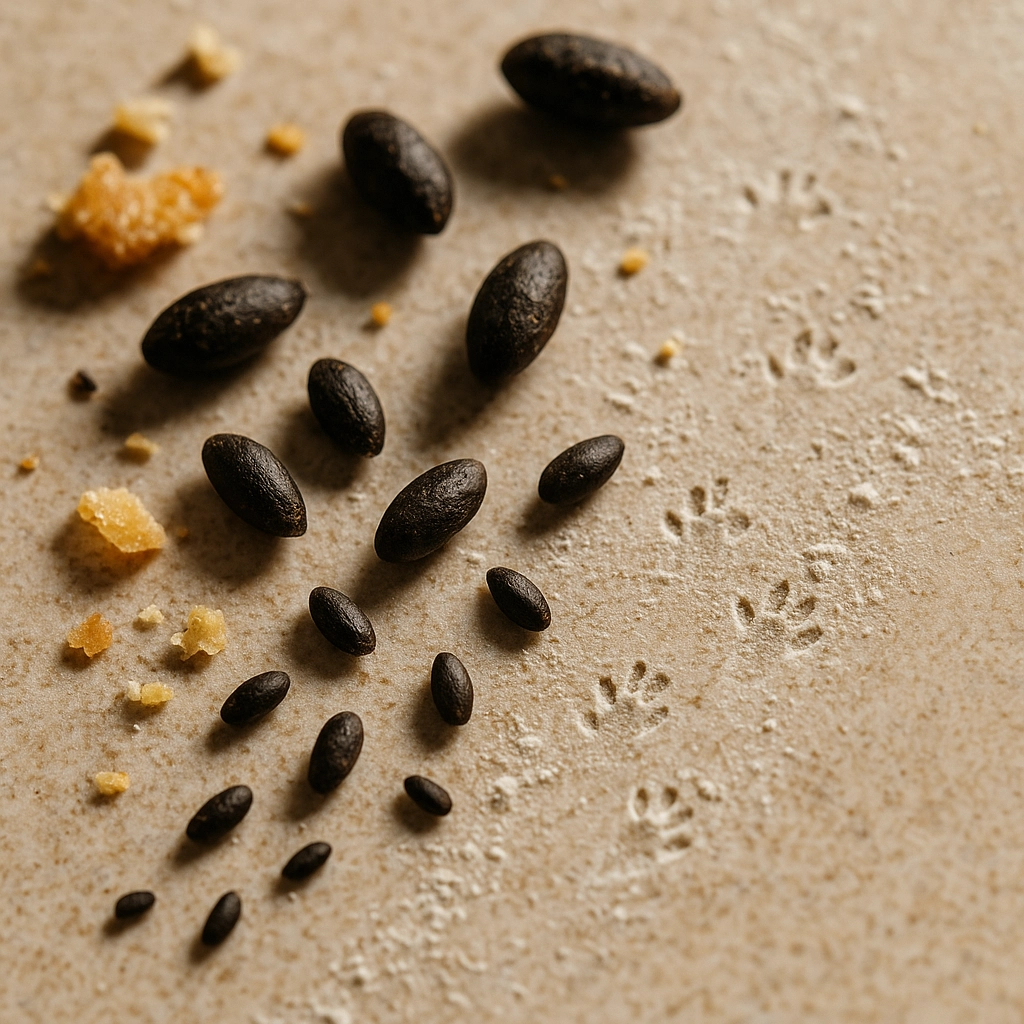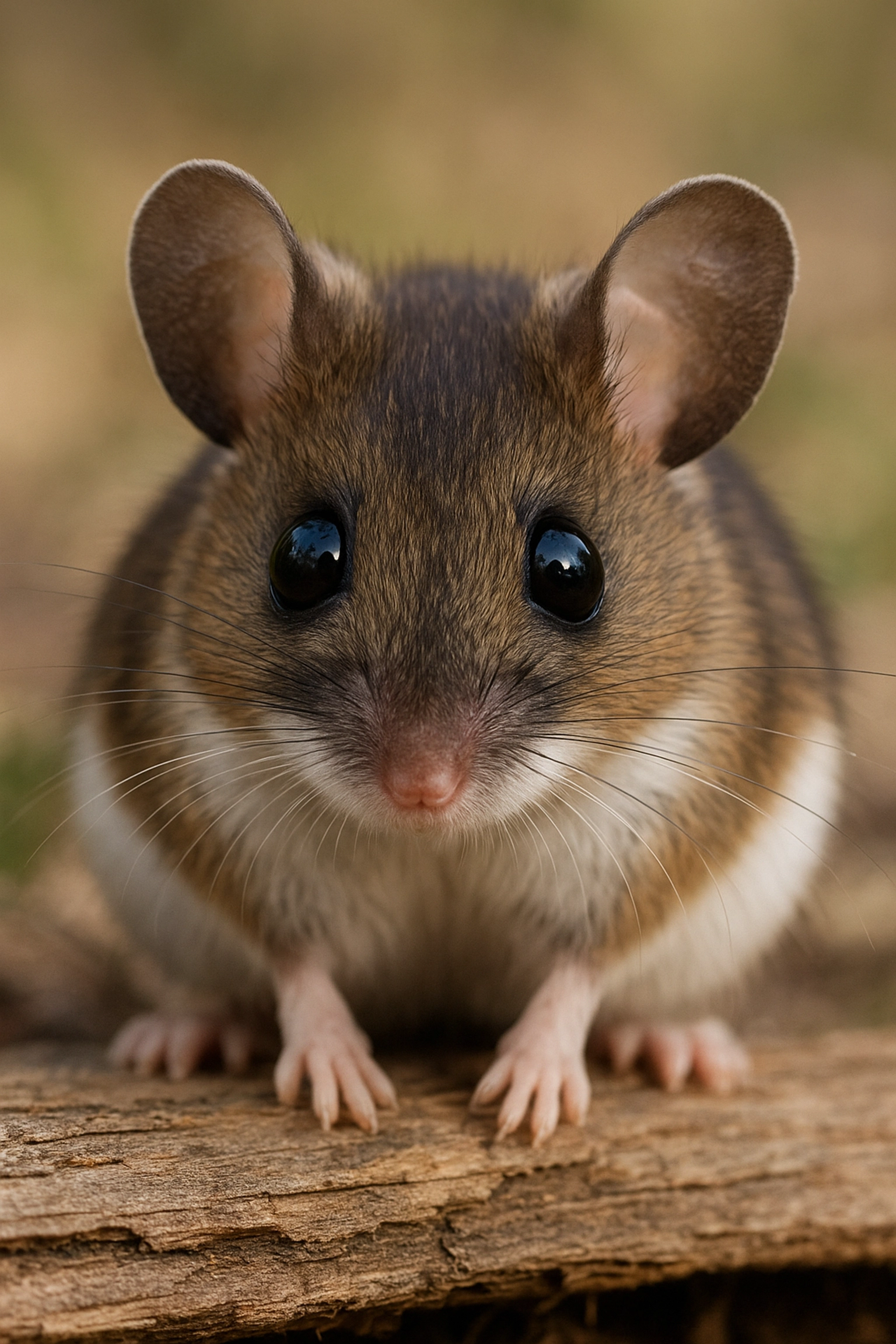House Mouse or Deer Mouse? The Quick Guide to Identifying Massachusetts Rodents in Your Home
- harveysanimalevict
- Sep 9
- 3 min read
Identifying rodents in Massachusetts homes requires specific knowledge. House mice and deer mice present distinct characteristics. Proper identification determines treatment approach and health risk assessment.
Physical Appearance Differences
House Mice Characteristics:
Length: 3-4 inches
Uniform gray-brown coloration
Hairless tail
Small eyes and ears
Consistent color throughout body
Deer Mice Characteristics:
Length: 5-8 inches
Bi-colored pattern: dark back, white belly
Hairy tail with dark top, light bottom
Large eyes and ears proportional to body
Distinct white legs and feet

Size Comparison Data
House mice measure significantly smaller than deer mice. Length differential ranges 1-4 inches. Weight varies proportionally. Tail length corresponds to body size differences.
House mouse tail appears uniformly colored. Deer mouse tail displays contrasting colors. Hair coverage differs between species.
Behavioral Pattern Analysis
Food Storage Behaviors:
Deer mice: Active hoarding near nests
House mice: Minimal food storage behavior
Droppings Characteristics:
Both species: Small, oval-shaped
Deer mouse droppings: Larger size
House mouse droppings: Smaller, more numerous
Activity Patterns:
House mice: Continuous indoor presence
Deer mice: Seasonal indoor migration
Habitat Distribution
House Mice Locations:
Wall voids
Attics
Basements
Kitchen areas
Near human activity zones
Deer Mice Locations:
Areas adjacent to fields
Properties near forests
Locations with park access
Seasonal indoor shelters
Pantries during cold months
House mice adapt to urban environments. Permanent residential establishment occurs frequently. Deer mice require proximity to natural areas. Temporary indoor presence typical.

Health Risk Assessment
House Mice Health Concerns:
Salmonella transmission
Flea infestation
General pathogen spread
Property contamination
Deer Mice Health Concerns:
Hantavirus carrier status
Hantavirus Pulmonary Syndrome risk
Transmission through droppings contact
Urine contamination hazards
Saliva exposure risks
Deer mice present higher health risks. Hantavirus causes severe respiratory illness. Fatality rates require immediate professional intervention.
Identification Process Steps
Step 1: Color Pattern Check
Examine belly coloration
Assess back color contrast
Note leg and feet colors
Step 2: Size Measurement
Estimate body length
Compare to standard objects
Account for tail length
Step 3: Tail Examination
Check for hair coverage
Identify color patterns
Assess length proportion
Step 4: Feature Analysis
Evaluate eye size
Examine ear proportions
Note overall body shape

Massachusetts Seasonal Patterns
Fall season increases indoor activity. Cold weather drives both species toward heated structures. Deer mice show greater seasonal variation. House mice maintain consistent indoor presence.
Winter months peak invasion periods. Spring emergence varies by species. Summer outdoor activity predominates for deer mice.
Quick Reference Identification Chart
Professional Assessment Indicators
Contact professional services when:
Large droppings discovered
Bi-colored rodents observed
Multiple entry points identified
Health concerns present
DIY methods fail
Common Misidentification Factors
Poor lighting conditions affect color assessment. Distance viewing reduces accuracy. Juvenile specimens display different proportions. Stress responses alter normal behavior patterns.
Size estimation errors occur frequently. Color variations exist within species. Geographic differences influence appearance. Seasonal coat changes affect identification.

Massachusetts Species Distribution
House mice occupy all Massachusetts regions. Urban areas show highest concentrations. Suburban properties experience moderate populations. Rural locations present mixed species.
Deer mice concentrate in areas with forest access. Coastal regions show seasonal variations. Mountain areas maintain year-round populations. Agricultural zones experience periodic invasions.
Immediate Action Protocol
Upon Deer Mouse Identification:
Avoid direct contact
Wear protective equipment
Document location and time
Contact professional services immediately
Upon House Mouse Identification:
Assess infestation scope
Identify entry points
Implement initial exclusion measures
Monitor for population changes
Prevention Strategy Differences
House mouse prevention focuses on exclusion and sanitation. Deer mouse prevention emphasizes exterior modifications. Natural area management reduces deer mouse attraction. Urban sanitation controls house mouse populations.
When to Contact Harvey's Animal Evictions
Professional identification eliminates guesswork. Expert assessment ensures accurate species determination. Proper treatment protocols require professional implementation. Health risk mitigation demands specialized knowledge.
Massachusetts regulations require specific handling procedures. Licensed professionals provide compliant services. Equipment and training ensure safe removal. Follow-up services prevent reinfestation.

Documentation Requirements
Photograph specimens when possible. Record locations and times. Document damage patterns. Note behavioral observations. Maintain activity logs.
Professional services require detailed information. Accurate reporting improves treatment success. Complete documentation supports insurance claims. Proper records aid prevention planning.
Emergency Response Protocols
Hantavirus exposure requires immediate medical consultation. Direct contact with deer mice demands protective measures. Professional assistance minimizes health risks. Proper cleanup prevents further contamination.
House mouse encounters allow standard precautions. Basic protective equipment suffices for cleanup. Professional services recommended for large infestations.
Contact Harvey's Animal Evictions for professional identification and removal services. Expert assessment ensures accurate species determination and appropriate treatment protocols for Massachusetts properties.

Comments